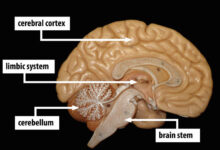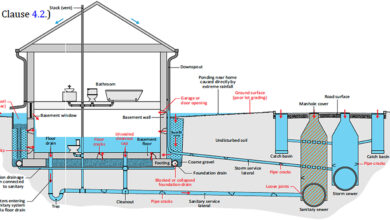System wireless: Wireless System Secrets: 7 Powerful Insights You Need Now
Ever wonder how your phone connects to the internet without a single wire? It all comes down to the magic of a system wireless. From smart homes to global communications, wireless systems are silently shaping our world—faster, smarter, and more connected than ever.
What Is a System Wireless? Understanding the Core Concept

The term system wireless refers to any network or setup that transmits data, power, or signals without relying on physical cables. Instead, it uses electromagnetic waves—like radio frequencies, infrared, or microwaves—to communicate between devices. This technology powers everything from Wi-Fi routers to satellite communications.
How Wireless Systems Differ from Wired Systems
Unlike traditional wired networks that depend on Ethernet cables or fiber optics, a system wireless eliminates the need for physical connections. This offers greater flexibility and mobility but also introduces challenges like interference and security risks.
- Wired systems offer stable, high-speed connections but lack portability.
- Wireless systems prioritize convenience and scalability over raw stability.
- Latency is typically lower in wired setups, making them ideal for real-time applications like gaming or video conferencing.
Key Components of a Wireless System
A functional system wireless isn’t just about routers and smartphones. It involves several critical components working in harmony:
- Transmitter: Sends data via radio waves.
- Receiver: Captures incoming signals and decodes them.
- Antenna: Enhances signal strength and range.
- Modulation Technology: Encodes information onto carrier waves (e.g., AM/FM, QAM).
- Network Protocol: Governs how devices communicate (e.g., IEEE 802.11 for Wi-Fi).
“The essence of a system wireless lies not in the absence of wires, but in the presence of intelligent signal management.” — Dr. Lena Torres, Wireless Communications Researcher
Types of System Wireless Technologies in Use Today
Not all wireless systems are created equal. Different technologies serve different purposes based on range, bandwidth, and power requirements. Let’s explore the most common types shaping modern connectivity.
Wi-Fi (IEEE 802.11 Standards)
Wi-Fi is perhaps the most familiar form of a system wireless. Operating primarily in the 2.4 GHz and 5 GHz frequency bands, Wi-Fi enables local area networking for homes, offices, and public hotspots.
- Wi-Fi 6 (802.11ax) improves efficiency in crowded environments.
- Wi-Fi 6E extends into the 6 GHz band for less interference.
- Backward compatibility ensures older devices still function.
For deeper technical insights, visit the official IEEE website, which governs these standards.
Bluetooth and Personal Area Networks (PANs)
Bluetooth is a short-range system wireless designed for connecting devices within a few meters. Common uses include wireless headphones, keyboards, and smartwatches.
- Bluetooth Low Energy (BLE) extends battery life for IoT devices.
- Version 5.0+ supports longer range and higher data throughput.
- Mesh networking allows multiple devices to relay signals.
Cellular Wireless Systems (4G, 5G, and Beyond)
Cellular networks represent large-scale system wireless infrastructures. These are managed by telecom providers and enable mobile internet access across cities and countries.
- 4G LTE offers speeds up to 100 Mbps for mobile broadband.
- 5G introduces ultra-low latency (<1ms) and massive device connectivity.
- mmWave technology in 5G delivers gigabit speeds but has limited range.
Learn more about 5G advancements at 3GPP.org, the global standards body for mobile communications.
How a System Wireless Transmits Data: The Science Behind the Signal
At its core, a system wireless converts digital data into electromagnetic waves. This process involves modulation, transmission, propagation, reception, and demodulation. Understanding this flow helps demystify how your devices stay connected.
Modulation Techniques in Wireless Communication
Modulation is the method used to encode information onto a carrier wave. Different techniques offer trade-offs between speed, range, and resistance to noise.
- AM (Amplitude Modulation): Varies signal strength; used in older radio systems.
- FM (Frequency Modulation): Changes frequency; better sound quality and noise resistance.
- QAM (Quadrature Amplitude Modulation): Combines amplitude and phase changes; used in Wi-Fi and cable modems.
- OFDM (Orthogonal Frequency Division Multiplexing): Splits data across multiple subcarriers; key in Wi-Fi 6 and 5G.
Signal Propagation and Environmental Challenges
Wireless signals don’t travel infinitely. Their performance depends on physical obstacles, interference, and environmental conditions.
- Walls, metal structures, and water (like in human bodies) absorb or reflect signals.
- Interference from microwaves, cordless phones, or neighboring networks degrades performance.
- Weather conditions like heavy rain can affect satellite and long-range wireless links.
“A strong system wireless isn’t just about power—it’s about smart signal design.” — Prof. Rajiv Mehta, MIT Wireless Lab
Applications of System Wireless Across Industries
The versatility of a system wireless makes it indispensable across sectors. From healthcare to transportation, wireless technology drives innovation and efficiency.
Smart Homes and IoT Devices
In smart homes, a system wireless connects thermostats, lights, cameras, and voice assistants. Protocols like Zigbee, Z-Wave, and Wi-Fi enable seamless automation.
- Devices communicate via mesh networks for extended coverage.
- Cloud integration allows remote control via smartphones.
- Energy monitoring systems use wireless sensors to optimize usage.
Healthcare: Remote Monitoring and Telemedicine
Wireless systems enable real-time patient monitoring through wearable devices like ECG patches and glucose monitors.
- Data is transmitted securely to healthcare providers.
- Reduces hospital visits and improves chronic disease management.
- Enables emergency alerts for falls or cardiac events.
The FDA has approved several wireless medical devices, highlighting their reliability. Explore approved devices at FDA.gov.
Industrial Automation and Wireless Sensor Networks
In manufacturing, a system wireless monitors equipment health, tracks inventory, and controls robotic systems.
- Wireless sensors detect temperature, vibration, and pressure.
- Reduces downtime through predictive maintenance.
- Enables flexible factory layouts without cable constraints.
Advantages of a System Wireless Over Traditional Wired Networks
While wired systems still dominate in some high-performance scenarios, the benefits of a system wireless are compelling and growing.
Mobility and Flexibility
One of the biggest advantages is freedom of movement. Users can access networks from anywhere within range, enabling remote work, mobile computing, and dynamic workspaces.
- Employees can move between meeting rooms without losing connection.
- Guests can connect easily without needing physical ports.
- Supports BYOD (Bring Your Own Device) policies in enterprises.
Cost-Effective Deployment and Scalability
Installing cables through walls and ceilings is expensive and time-consuming. A system wireless reduces infrastructure costs significantly.
- No need for trenching or drilling for cable runs.
- Adding new devices is as simple as powering them on.
- Scalable for growing businesses and temporary setups (e.g., events).
Rapid Deployment in Emergency and Remote Areas
In disaster zones or rural regions, deploying a wired network isn’t feasible. Wireless systems can be set up quickly using portable base stations or satellite links.
- First responders use mobile Wi-Fi hotspots for coordination.
- Solar-powered wireless nodes bring internet to off-grid villages.
- Drone-based relays extend coverage in inaccessible terrain.
Challenges and Limitations of System Wireless
Despite its many benefits, a system wireless isn’t without drawbacks. Understanding these limitations is crucial for effective implementation.
Security Vulnerabilities in Wireless Networks
Because signals travel through the air, they’re more susceptible to eavesdropping and unauthorized access.
- Open networks can be exploited by hackers using packet sniffers.
- Weak encryption (e.g., WEP) can be cracked in minutes.
- Man-in-the-middle attacks can intercept sensitive data.
Solutions include using WPA3 encryption, disabling SSID broadcasting, and implementing firewalls. For best practices, refer to NIST guidelines on wireless security.
Interference and Signal Congestion
As more devices go wireless, the radio spectrum becomes crowded. This leads to interference, especially in urban areas.
- Multiple routers on the same channel reduce performance.
- Bluetooth and Wi-Fi often compete for the 2.4 GHz band.
- Physical obstructions weaken signal strength.
Using dual-band or tri-band routers, selecting less congested channels, and proper antenna placement can mitigate these issues.
Power Consumption and Battery Life
Many wireless devices rely on batteries, making energy efficiency a key concern.
- Constant signal transmission drains power quickly.
- IoT sensors in remote locations need years of battery life.
- Solutions like sleep modes and low-power protocols (e.g., LoRaWAN) help extend life.
Future Trends in System Wireless Technology
The evolution of a system wireless is accelerating. Emerging technologies promise faster speeds, lower latency, and broader applications.
6G and Terahertz Communication
While 5G is still rolling out, researchers are already developing 6G, expected by 2030. It will use terahertz (THz) frequencies for unprecedented data rates.
- Potential speeds exceeding 1 Tbps.
- Ultra-dense networks with millions of connected devices per square kilometer.
- Integration with AI for dynamic network optimization.
Explore ongoing research at ITU.int, the United Nations agency for ICT.
Wireless Power Transfer and Energy Harvesting
Imagine charging your phone without plugging it in. Wireless power transfer (WPT) is becoming a reality through technologies like magnetic resonance and RF energy harvesting.
- Qi charging pads already power smartphones and wearables.
- Long-range WPT could eliminate batteries in IoT sensors.
- Energy harvesting captures ambient RF signals to power small devices.
AI-Driven Wireless Networks
Artificial intelligence is being integrated into system wireless to optimize performance in real time.
- AI predicts traffic patterns and adjusts bandwidth allocation.
- Self-healing networks detect and fix connectivity issues automatically.
- Machine learning enhances beamforming in 5G antennas for better targeting.
How to Build a Reliable System Wireless at Home or Work
Whether you’re setting up a home office or a corporate network, building a robust system wireless requires planning and the right tools.
Choosing the Right Equipment
Start with high-quality hardware that supports the latest standards.
- Use Wi-Fi 6 or Wi-Fi 6E routers for better performance.
- Mesh systems (e.g., Google Nest Wi-Fi, Eero) eliminate dead zones.
- Ensure devices support WPA3 encryption for security.
Optimal Router Placement and Network Design
Location matters. A poorly placed router can cripple your system wireless.
- Place the router centrally and elevated, away from walls and metal objects.
- Avoid proximity to microwaves, cordless phones, and Bluetooth speakers.
- Use wired backhaul for mesh nodes when possible to boost speed.
Securing Your Wireless Network
Security should never be an afterthought.
- Change default admin passwords and SSID names.
- Enable network encryption (WPA3 preferred).
- Use a guest network for visitors to isolate main devices.
- Regularly update firmware to patch vulnerabilities.
What is a system wireless?
A system wireless refers to any network or technology that transmits data, voice, or power without physical cables, using radio waves, infrared, or other electromagnetic signals. Common examples include Wi-Fi, Bluetooth, and cellular networks.
What are the main types of wireless systems?
The primary types include Wi-Fi (for local networks), Bluetooth (for short-range device pairing), cellular networks (4G/5G for mobile internet), and specialized protocols like Zigbee and LoRaWAN for IoT applications.
Is a wireless system secure?
While convenient, wireless systems can be vulnerable to hacking if not properly secured. Using strong encryption (like WPA3), changing default settings, and keeping firmware updated significantly improve security.
How can I improve my wireless network performance?
Optimize router placement, switch to less congested channels, upgrade to modern standards (Wi-Fi 6), use mesh networks for large areas, and minimize interference from other electronic devices.
What’s the future of system wireless?
The future includes 6G networks, wireless power transfer, AI-optimized networks, and seamless integration with IoT and smart cities, promising faster, smarter, and more autonomous connectivity.
From the basics of how a system wireless works to its real-world applications and future potential, one thing is clear: wireless technology is the backbone of modern digital life. While challenges like security and interference remain, ongoing innovations continue to push the boundaries of what’s possible. Whether you’re streaming a movie, monitoring a patient remotely, or building a smart factory, the system wireless is silently working behind the scenes—connecting the world, one signal at a time.
Further Reading:









